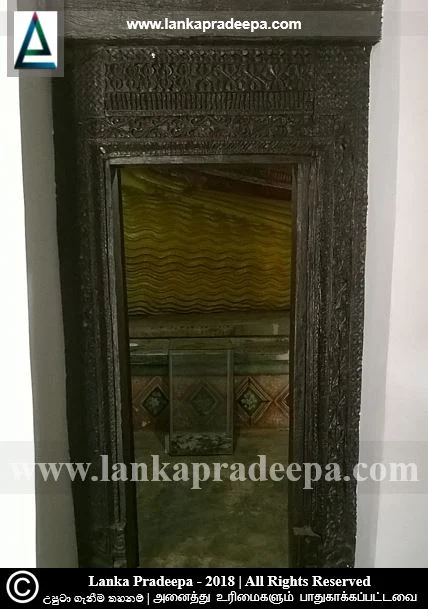
Vanamandawa Raja Maha Viharaya, also known as Wanamandawa Purana Viharaya (Sinhala: වනමන්දාව පුරාණ විහාරය), is an ancient Buddhist temple located in the village of Vanamandawa in Kurunegala District, Sri Lanka.
History
Locals link the history of this temple to the reign of King Valagamba [(103 B.C. and c. 89–77 B.C.) Anuradha & Kumari, 2015].
The cave temple (Len Viharaya) is the most ancient structure found in Vanamandawa Viharaya with a history spanning from the Anuradhapura Period to the modern Colombo era (Anuradha & Kumari, 2015). The drip-ledged cave and four rock-cut letters (thought to be Early Brahmi Scripts) which are found on the top of the cave-forming rock furnish evidence for the activities of the early Anuradhapura period (Anuradha & Kumari, 2015).
During the 18th century, the temple served Weliwita Sri Saranankara Thera (1698-1778 A.D.), at the time, who was the pioneer in the revival of Buddhism in Sri Lanka. The name of Vanamandawa temple is mentioned in "Sangharaja Sadhu Chariyawa", the biography of Ven. Welivita Saranankara Sangharaja written by Aiththaliyadde Muhamdiram Rala (Anuradha & Kumari, 2015).
Image House
The image house of Vanamandawa temple consists of two sections, viz: i) the inner chamber and ii) the outer part. The inner chamber contains paintings and sculptures belonging to the art tradition of the Kandyan Period. Paintings of Buddha, Arhats, gods, Solosmasthana (16 sacred places), Sath Sathiya (the seven weeks), and a figure of King Kirthi Sri Rajasinghe (1747-1782 A.D.) are found in this chamber (Anuradha & Kumari, 2015). Among the murals, the painting depicting the Mara Parajaya (defeat of Mara) is considered a special piece of work (Anuradha & Kumari, 2015).



 .
.
References
1) Anuradha, R.K.S.; Kumari, A.S., 2015. Pauranika Sthana Ha Smaraka: Kurunegala Distrikkaya (In Sinhala). Department of Archaeology. ISBN: 955-9159-37-2. p.86.

